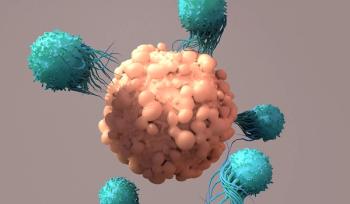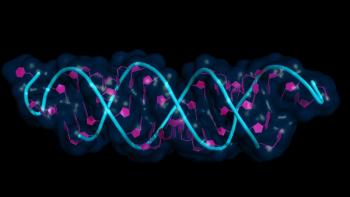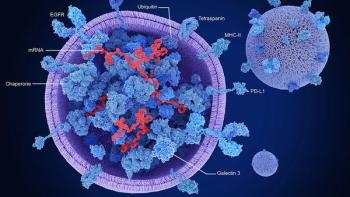
- BioPharm International September October 2025
- Volume 38
- Issue 7
- Pages: 16–17
The Evolving Cost-Benefit Landscape of Biosimilar Drug Development
Key Takeaways
- Biosimilars offer significant potential for cost reduction and improved medication access, but development is hindered by high costs and complex regulations.
- The FDA's updated Biosimilars Action Plan and proposed legislative changes aim to streamline biosimilar approval, reducing the need for extensive clinical trials.
With more than 100 next-generation biologics set to lose patent exclusivity in the next 15 years, there is widespread agreement that developing biosimilars for these therapies will benefit society as a whole.
The value of biosimilars in reducing healthcare costs, and improving access to medications for patients is now well-established. With more than 100 next-generation biologics, such as bispecifics, checkpoint inhibitors, vaccines, and viral vectors, set to lose patent exclusivity in the next 15 years, there is widespread agreement that developing biosimilars for these therapies will benefit society as a whole (1).
However, high costs of developing biosimilars and complex approval requirements present significant challenges for biosimilar companies. Such stringent regulatory pathways disincentivize organizations from moving forward with any but the most commercially successful next-generation biologics. In many instances, it may not be financially viable for biosimilar manufacturers to invest in the extensive development work currently required by regulators to demonstrate the evidence of biosimilar equivalency to the currently marketed originator.
There is an urgent need, therefore, to promote changes in how regulators assess biosimilars, as well as to identify and implement efficiencies in the development process.
Early signs of regulatory interest in change
FDA offers an abbreviated approval pathway for biosimilars, allowing manufacturers to avoid generating the full set of nonclinical and clinical data that were required for the reference product. Instead, in their biosimilars submission package, sponsors can rely in part on FDA’s prior determination of the reference product's safety and efficacy. However, the additional data needed from biosimilar sponsors remain extensive, including the results of analytical studies, animal studies (e.g., toxicity and bioavailability assessments) and clinical studies sufficient to demonstrate safety, efficacy, and equivalency. These clinical trials typically assess clinical efficacy, immunogenicity, pharmacokinetics (PKs), and in some cases, pharmacodynamics (PDs). These PK sub-studies (PKSS) may enroll healthy volunteers or patients, depending on the biologic and indication. Comparative clinical studies (CCS) may also be requested by FDA, which must mirror the keynote trial of the originator.
CCS, therefore, may be quite large and yet suffer from difficulties in recruiting sites and participating patients, because the reference product (and potentially other biosimilars) are already on the market to treat patients. Additionally, the treatment paradigm for an indication may have further evolved because the reference product’s pivotal study(ies), creating additional challenges for the biosimilar’s clinical trial.
Interchangeability studies post-approval may also be required to allow substituting or switching individual patient treatment from the originator biologic to the approved biosimilar.
In 2024, FDA updated its 2018 Biosimilars Action Plan(2) to further accelerate the development of biosimilars, building on the progress made through the original initiative. The revised plan outlines four key objectives designed to improve biosimilar development, including streamlining the clinical development process and reassessing the need for comparative clinical studies.
As a result, sponsors are revisiting protocol designs in their clinical development plans and have successfully obtained FDA approval to proceed with these more innovative, less traditional trial approaches. Achieving FDA's 2024 goals is crucial for ensuring that biosimilar manufacturers can submit the results of these novel trials, thus avoiding the need for costly and extensive global clinical studies to demonstrate equivalence to complex biologics that are approaching the end of their patent exclusivity.
In the United States, Senator Rand Paul introduced the Expedited Access to Biosimilars Act (3). If passed, the legislation would retain FDA’s requirement for PK studies for biosimilars but would eliminate the “blanket requirement” of immunogenicity, PDs, and clinical efficacy studies, unless scientifically warranted.
Proposed EMA biosimilar approval changes
The European Medicines Agency (EMA) also requires a structured, scientific stepwise approach for sponsors to obtain regulatory approval for biosimilars. Submission packages to start clinical trials must contain extensive analyses of the compound’s analytical properties and functional activity, results of good laboratory practice non-clinical studies assessing safety, PK, PD, and immunogenicity results. A summary of available clinical data for the originator and any biosimilar already marketed must also be included (4).
Once these data are provided and submitted through the European Union centralized regulatory process (EU-CTR), the lead country reviewers determine the path forward to start clinical trials. Individual European countries may also request additional information, changes to study design, or other information before granting approval for the sponsor to start human clinical trials.
Similar to FDA, EMA typically requires both PKSS and CCS trials, with an interim analysis of the PKSS human trial data before the CCS trial may begin. Like FDA’s 2024 goals in the Biosimilars Action Plan, in April 2025,EMA released a reflection paper suggesting ways to reduce the amount of clinical data required (5). The paper proposes that similarity with the reference compound may be shown sufficiently based on demonstrated structural and functional comparability together with comparative PK data. In other words, in some circumstances, there may not be a need for comparative efficacy studies; synthetic control arms might be used.
Supporting the acceleration of biosimilar drug development
Both FDA and EMA initiatives advocate for a biosimilar approval pathway that could substantially reduce the clinical, financial, and time-related challenges that sponsors currently face. Reducing these challenges has the potential to accelerate the development and market entry of more biosimilars, ultimately providing healthcare professionals, payers, and patients with access to essential treatments at a significantly lower cost.
References
1. Jeremias, S. The Biosimilar Void: 90% of Biologics Coming Off Patent Will Lack Biosimilars. AJMC Feb. 5, 2025.
2. FDA. Biosimilars Action Plan. FDA.gov. April 26, 2024 (accessed June 4, 2025).
3. US Congress. S. 1414. April 10, 2025.
4. EMA. Biosimilar Medicines: Marketing Authorization. ema.europa.eu (accessed June 17, 2025).
5. EMA. Reflection Paper on a Tailored Clinical Approach in Biosimilar Development. ema.europa.eu (accessed June 17, 2025).
About the author
Kimberly Salgado is Head of Centre for Biosimilar Drug Development, ICON plc.
Articles in this issue
3 months ago
Optimizing Testing in Cell and Gene Therapy4 months ago
New Technologies for Viral ClearanceNewsletter
Stay at the forefront of biopharmaceutical innovation—subscribe to BioPharm International for expert insights on drug development, manufacturing, compliance, and more.





